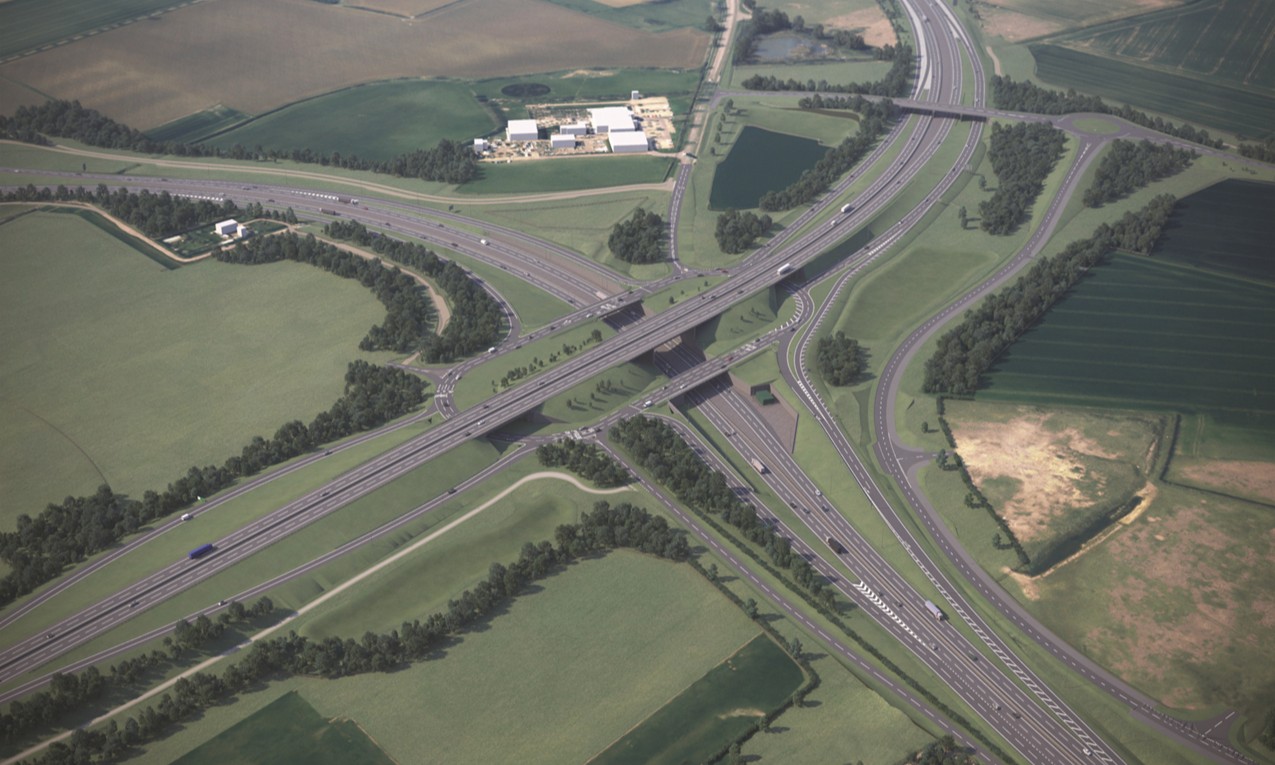Bring together data, technology and people to focus on mobility
Graeme Smith interview: the forward-looking aim of Mott MacDonald’s transport and mobility solutions division
Solving the transport issues of today and tomorrow calls for a wider range of tools, solutions and skills, according to Mott MacDonald transport and mobility solutions general manager Graeme Smith.
Improving connectivity in the past usually meant building more roads, but that era looks set to change with National Highways previously suggesting we already have the road network we need. As National Highways – and the wider industry – look to the future then, it’s clear that renewals, enhancements and digital roads will need to play an increasingly central role; making sure the network delivers for its customers, rather than major road building.
This change in direction is likely to be mirrored on local roads too with an emphasis on improving flow and ensuring mobility for all, rather than just the needs of cars and lorries. According to Mott MacDonald transport and mobility solutions (TMS) general manager Graeme Smith, these shifts mean that the highways industry must evolve to respond and support clients in this new era.

“The UK has a vast road network but it’s complex and the way it is managed is complex too, plus current financing mechanisms and maintenance strategies mean that there is never enough money to fund maintenance of this network,” says Smith. “At the same time as grappling with these issues, local authorities and strategic network operators are trying to understand what mobility will mean in the future. Delivering the right network for that future, despite uncertainties that surround it, is challenging – whether that’s climate change, funding constraints or social inequality. What is clear is that doing the same things we have always done is unlikely to create the right outcome. Fresh thinking is needed, as are changes in mindsets.”
That fresh thinking has been front and centre for Smith so far this year. The TMS division that he leads was formed in early 2024 to bring together Mott MacDonald’s highways division with its wider transport planning and modelling capabilities; bridging the gap between infrastructure, planning and technology in a new integrated offer which considers the full transport and mobility ecosystem. There are plans to further expand the focus of the team in 2025 by bringing staff working in Urban Transit and Mobility and local streets and infrastructure into TMS. However, the ultimate focus is not just about bringing teams together, it is also about integrating this expertise with new and existing technologies.
While the TMS team are working on some of the UK’s largest highways projects, such as National Highways’ £1bn A428 Black Cat to Caxton Gibbet improvements, parts of the Lower Thames Crossing and Transport Scotland’s £185M A9 Tomatin and Moy upgrade, the change was driven by what the firm could see happening more broadly in the sector.
Smith describes the capabilities of TMS division he leads as more coherent as a result of bringing the front-end transport planning concept work together with the downstream highways delivery.

“Over the next few years there will be a massive pivot towards asset management and maintenance and renewals in the UK. This change puts the emphasis on mobility and creates the need to think differently about how we solve our clients’ problems,” he explains.
Smith is clear on what the known problems are – maintaining ageing assets, decarbonisation and planning for alternate mobility solutions.
“The modal choice piece sits across all of that too. Do we want more mass transit or do we want more individual point to point trip capability – or both? If it’s both, then how do we accommodate that on an existing network that was mostly built for horses and carts,” he adds.
“Not many local authorities understand yet how to deal with these challenges and the next few years will need to be spent unpicking that.
“If you overlay all of those issues with digital transformation and the explosion of data we’re trying to analyse as a result, I think you’ve got a really wicked problem in transport in the UK.”
Beyond the major schemes Smith’s team is involved in, he says they are already undertaking a lot more work focused on asset management, maintenance and renewals. However, he believes that the kind of solutions clients need will call for more partnering and collaboration in the industry in the future.
“One of the things that I'm really keen to do is to partner a lot more, whether that be with contractors or other consultants,” says Smith. “There's a lot that the clients can gain from putting the right knowledge together.
“Stronger, deeper relationships with our partners rather than going in separately will be important going forward so that we can pool knowledge and expertise to find new solutions.”
As an example of the types of new approach Smith means, he points to work being done by a Mott MacDonald team in North Carolina that focuses on best use of asset. He says there they are using analysis of the asset to deliver pre-emptive maintenance with the investment put into the analysis rather than the materials. “Using those techniques, they don’t wait for the pothole to form,” Smith explains. “Our team there use highly sophisticated equipment and analysis techniques to understand the pavement and apply money in the right place.”

That work is about improving maintenance and management of the existing network but Smith believes clients will need much more support when it comes to planning for the future and tackling the uncertainties ahead. “Predict and provide has been the conventional approach to determine new road investment in the past,” he says. “We need to move towards decide and provide if roads authorities want to manage travel demand and create modal shift and will need support to understand how they’re going to deliver that. It also raises the question about why we still have highways bodies. Given the focus we need to have on mobility going forward, I do wonder if we need to see more combined transport authorities so there is more joined up thinking about overall mobility at the outset.
“We heard central government talk about the need to get more people onto buses, which is easy to say but hard to implement, plus more people need to choose cycling and walking – active travel. The key is going to be developing plans that deliver real connectivity between transport modes and to do that we need organisations that have authority over more than just roads.”
However, underpinning all this is uncertainty over travel patterns and demand that was partly triggered by the Covid-19 pandemic. To cope with these types of challenges, Smith says that the industry needs to have resilience built in to cope with volatile and complex demands. This is where Smith believes his overseas experience will help position the TMS division he leads.
“Before I joined Mott MacDonald in 2019 as a major projects director, the bulk of my career had been spent working first in Australia and New Zealand before working in Asia and the Middle East with Aurecon,” he explains. “Working in Asia and the Middle East was a very different environment to what we’ve traditionally had in the UK with lots of change, a different outlook and diverse teams delivering the work.”
Smith says that the maturity of clients in that region also varied enormously with some having a clear understanding of what they needed, while others needing support to reach the right decisions. “I think this experience means I am well positioned to think differently and not always do the same as we’ve done before,” he explains. He adds that relationships with the client were key to finding out what they wanted, understanding the outcome they needed and then advising them on the scheme that would deliver the right result in the timeframe and budget available.
“Understanding around the role of culture was critical in those markets,” Smith says. “I believe that will be the case in the UK too as we tackle the challenges and changes ahead of us.”
Subscribe for exclusive updates
Receive our expert insights on issues that transform business, increase sustainability and improve lives.



